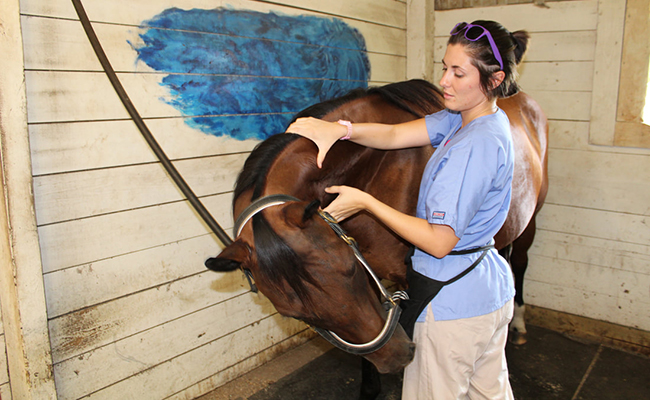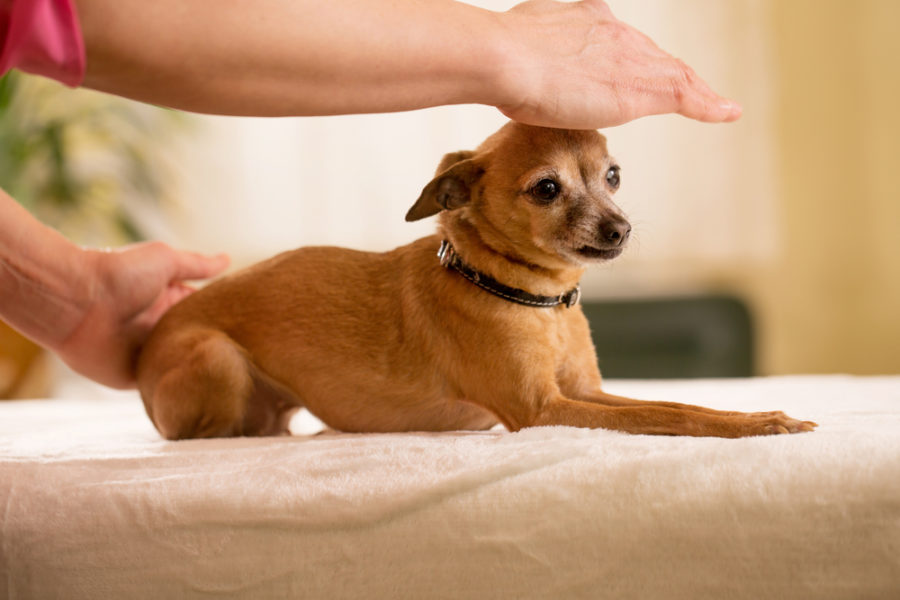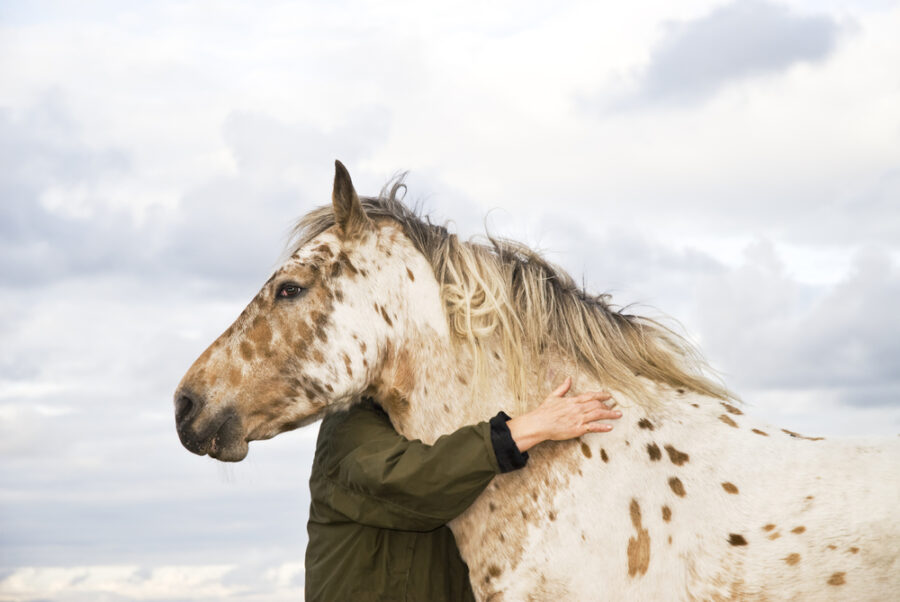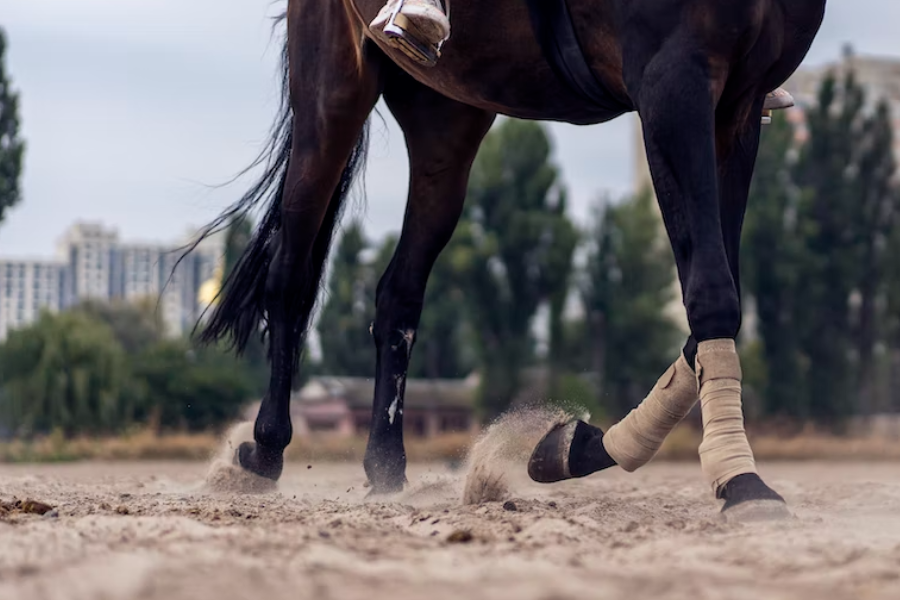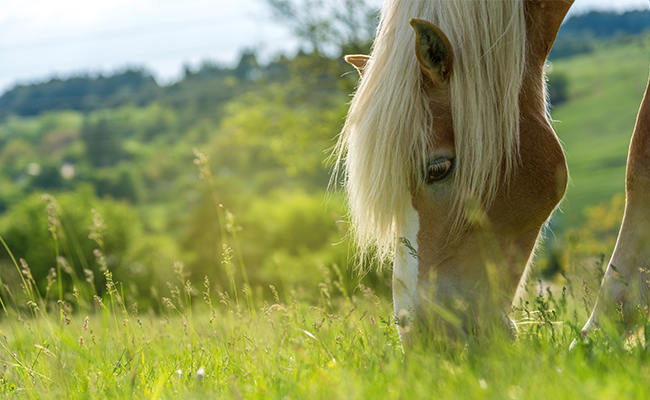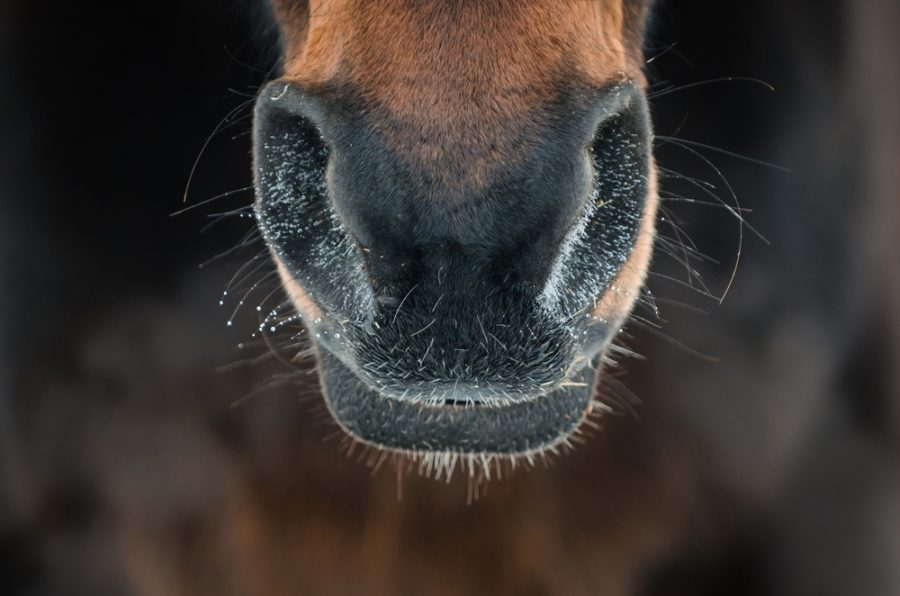Like you, your horse can benefit from a massage. Learn to identify the signs your horse needs massage therapy plus how you can provide it!
Many horse owners realize the benefits of bodywork for their horse. Horses will often become sore after riding and training similar to human athletes. Just like people, horses can greatly benefit from massage therapy to decrease lactic acid build up in the muscles, speed up recovery time, increase range of motion and decrease pain and discomfort. Mares and stallions who are being used for breeding can also greatly benefit from soft tissue work. But what is equine massage, and how can you learn this technique?
What is equine massage?
Equine massage is the use of hands, arms, elbows and/or tools to rub and knead the muscles of the horse’s body to decrease tension and/or pain. Equine massage utilizes modified human massage techniques on horses to help them perform better and decrease pain associated with training, an ill fitting saddle, an unbalanced rider or injury.
Benefits of massage therapy
- Increase blood flow to speed up healing process
- Decrease muscle spasms
- Increase range of motion – Increase joint flexibility
- Help the horse prepare for and recover from exercise
- Improve mental wellbeing
- Reduce scar tissue formation
- Release endorphins – the body’s natural pain killers
- Decrease the chance of injury
Signs that a horse needs a massage:
- Pinning ears back, biting or kicking when saddling or riding
- Reluctance to move forward during exercise
- Difficulty bending to one or both sides
- Difficulty picking up correct lead at the canter
- Leg weakness, dragging of toes
- Tossing head during exercise
- Uncharacteristic bucking and/or rearing during exercise
- Horse seems more “spooky” than usual
- Horse is in an uncharacteristic bad mood
- Reluctance to be caught
If your horse is experiencing any of the above symptoms, they can likely benefit from equine massage therapy. It is important when providing your horse with massage therapy to either gain proper training before applying the techniques or hiring a certified equine massage therapist. There are times when massage therapy can make a condition worse, so all contraindications will need to be ruled out before massage therapy is performed. Also, remember that massage therapy is not a substitute for veterinary care and you should also consult with your veterinarian before trying a new therapy with your horse!
How to learn equine massage
Holistic Animal Studies offers an online course for horse owners to teach them how to perform several massage techniques on their horse including Swedish massage, myofascial release, Gua Sha massage and other strokes. The course can be started at any time and students can work at their own pace. The online program takes you step by step through the process of massaging your horse ensuring that you are able to safely and effectively help your equine partner through bodywork. Students also have access to the instructor and teaching assistants, along with other students and practitioners, who can answer any questions they have and provide them with guidance along the way.
[pro_ad_display_adzone id=”40106″]

